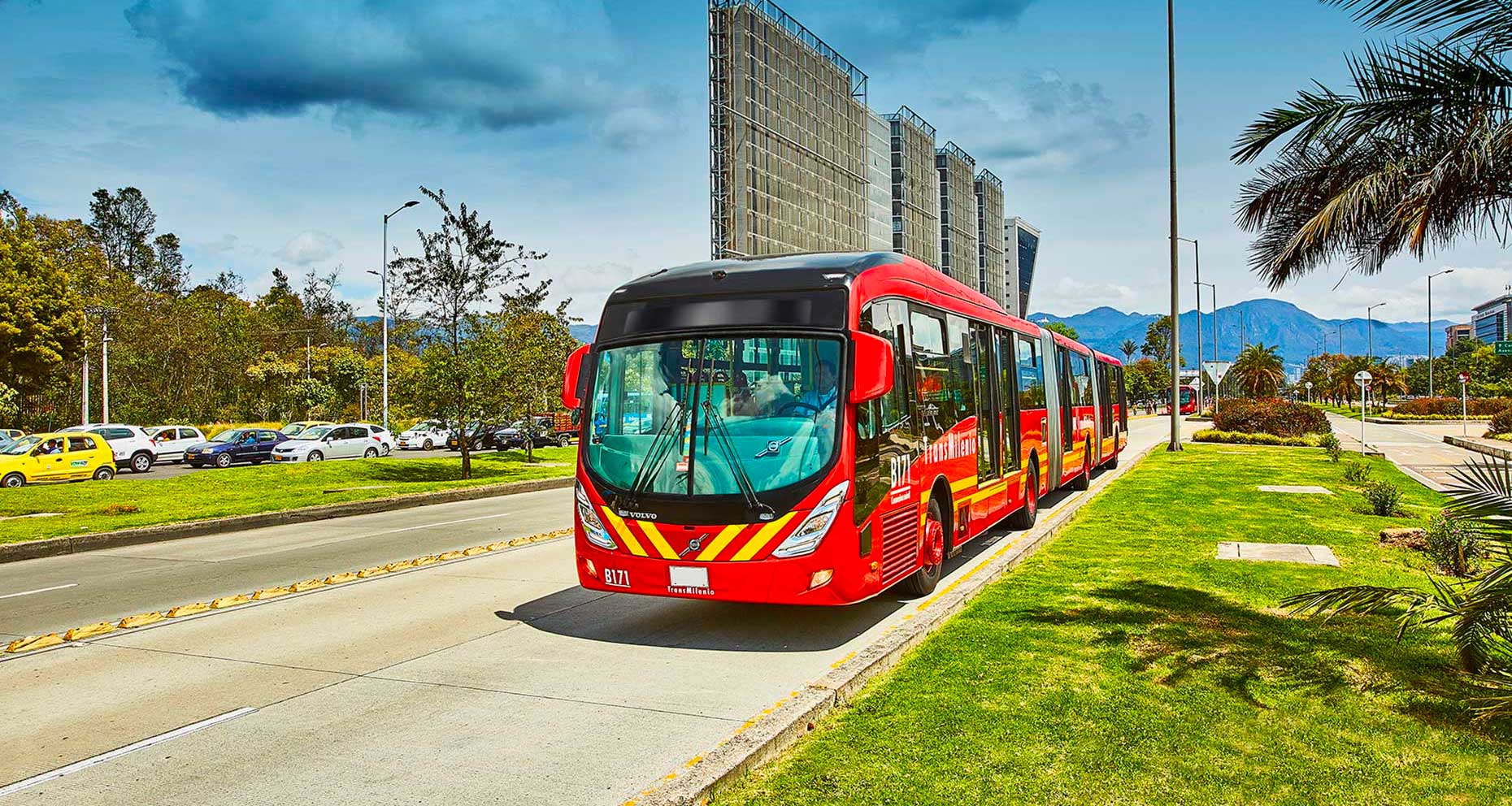
The public transportation system in Bogota is essentially a bus rapid transit (BRT) system, though there is also a large network of local buses and even a cable car. The system is fast, efficient and easy to use, but its wheelchair accessibility is poor. Read this guide to learn about my experience taking a wheelchair on Bogota’s public transport system, information that will help you prepare for your own accessible journeys.
TransMilenio: Bogota’s BRT System
TransMilenio is Bogota’s bus rapid transit (BRT) system, opened in 2000. BRT systems like TransMilenio include roadways dedicated to buses, allowing for an above-ground bus service that operates with similar efficiency to an underground subway. Bogota’s BRT system, which includes 12 distinct lines and 148 stations, has been praised as one of the world’s most well-executed bus transport systems.
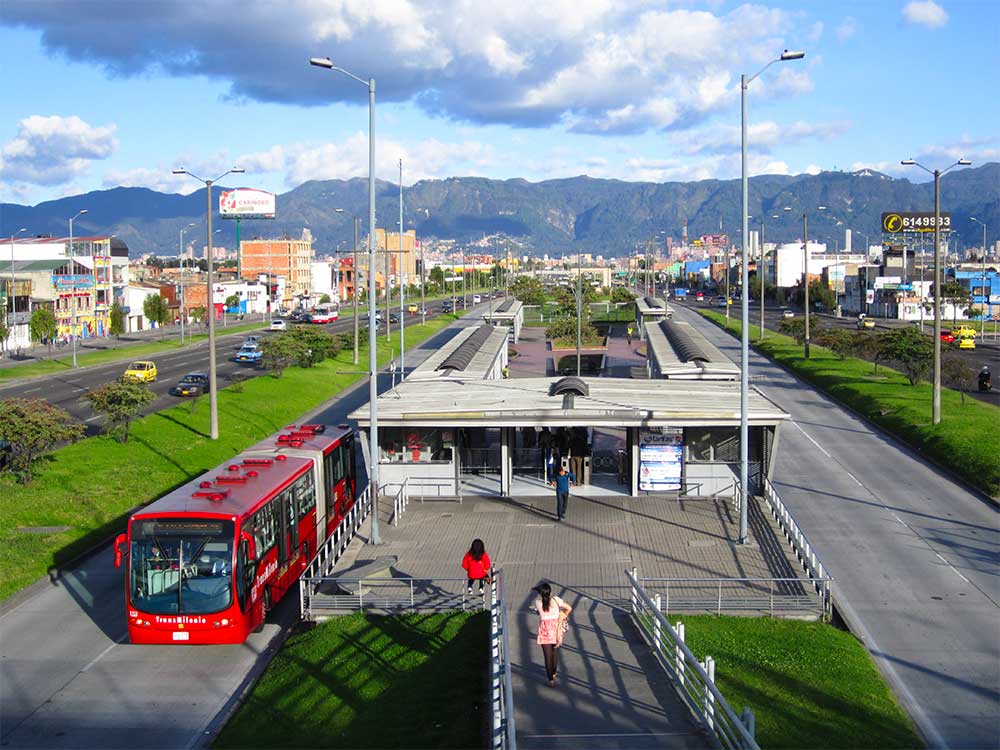
Stations, like the one pictured above, contain an island platform. Buses pull up to the side of the station platform, allowing passengers to board the buses. It’s an incredibly efficient system, but significant accessibility barriers exist.
Wheelchair Accessibility of Bogota TransMilenio Buses
Wheelchair users can reach each of the 148 TransMilenio stations. Ramps and bridges cross the roadways to provide access to the island station platforms. When I first saw this network of access points, I was truly impressed. There is no need to worry about elevators being out of service — ramps are always open!
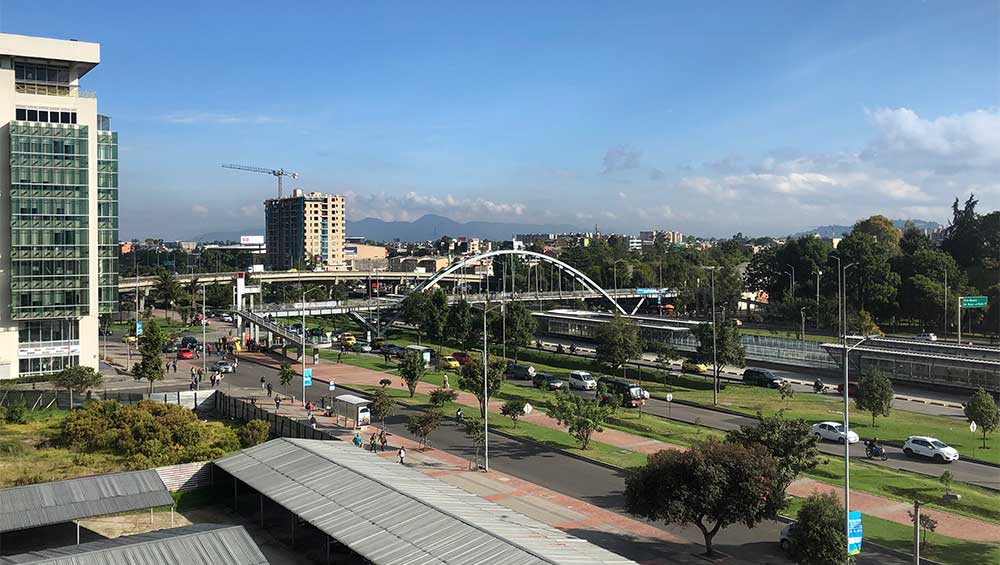
Despite the access provided to the stations themselves, there is a deficiency in access onto the TransMilenio buses. Depending on how close to the platform the bus driver stops, the gap between the bus and platform edge could be several inches or more. The platform and bus are not always level, either, with height differences of up to 5 inches in some cases.
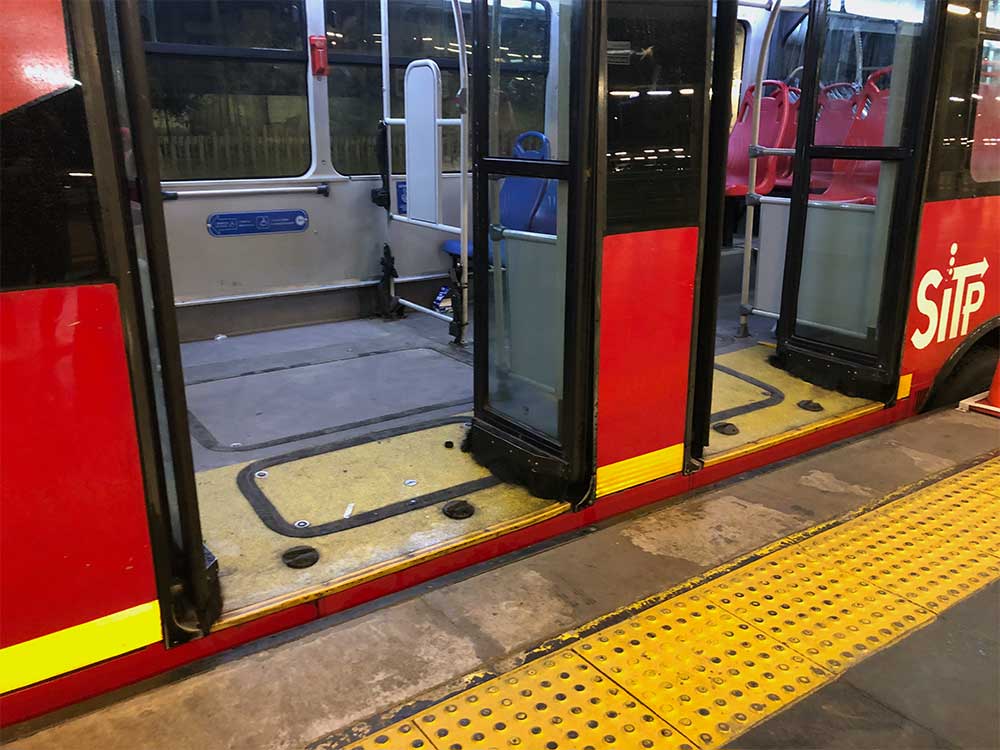
I had good luck on my first few rides, but on a subsequent trip, the gap was significantly wider. The front casters of my Quantum Q6 Edge wheelchair fell into the gap, and I flew out of my chair onto the floor of the bus. It was incredibly painful, and a terrible wake-up call.
Neither the buses or stations have ramps available to bridge the gap, so I strongly encourage wheelchair users to bring their own portable ramp to Bogota. This ramp would also be useful in overcoming some of the accessibility barriers on Bogota sidewalks.
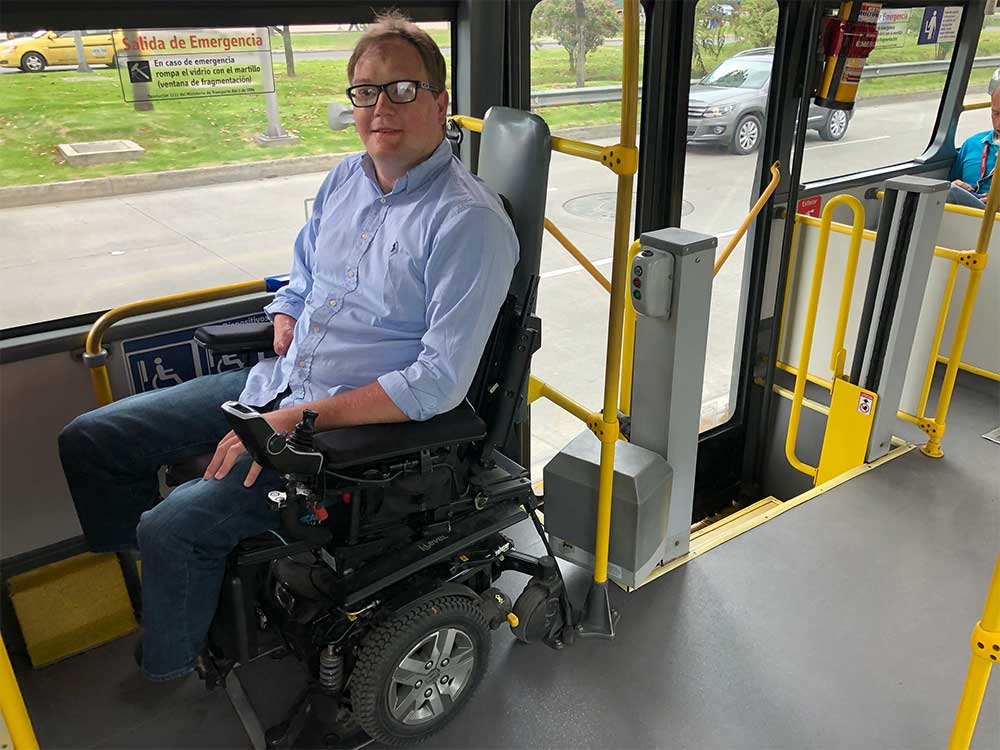
Each TransMilenio bus has a designated wheelchair space (or two). There is a stop request button for disabled people in that space, which I hoped would remind the driver to park as close as possible to the station platform. I do not think it actually had any effect on the drivers, who seemed unable to comprehend the issues with an excessive gap. On a number of occasions, I had to remain on the bus because I judged the gap to be too wide at my desired stop.
Feeder Routes & Local Buses
The TransMilenio bus system has twelve main lines, or dedicated bus corridors through the city. They are illustrated in the following map.
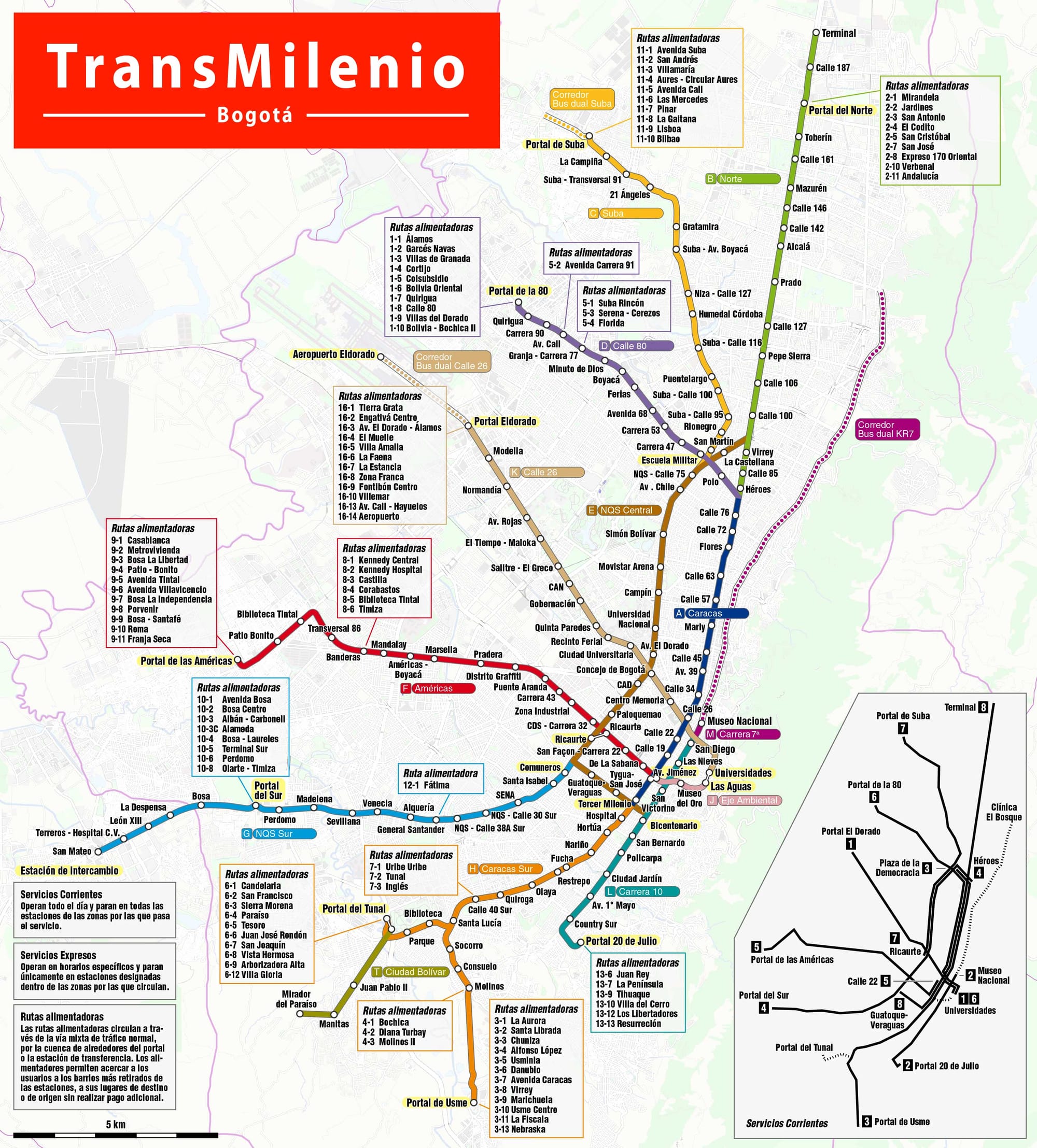
Through these corridors run many different bus routes, each serving different destinations and moving through the city along different lines or combinations of lines. Each numbered bus route has a specific itinerary, period of operation, frequency, etc. During the day, you may find that many routes will get you between your departure point and destination; late at night, there might only be one route.
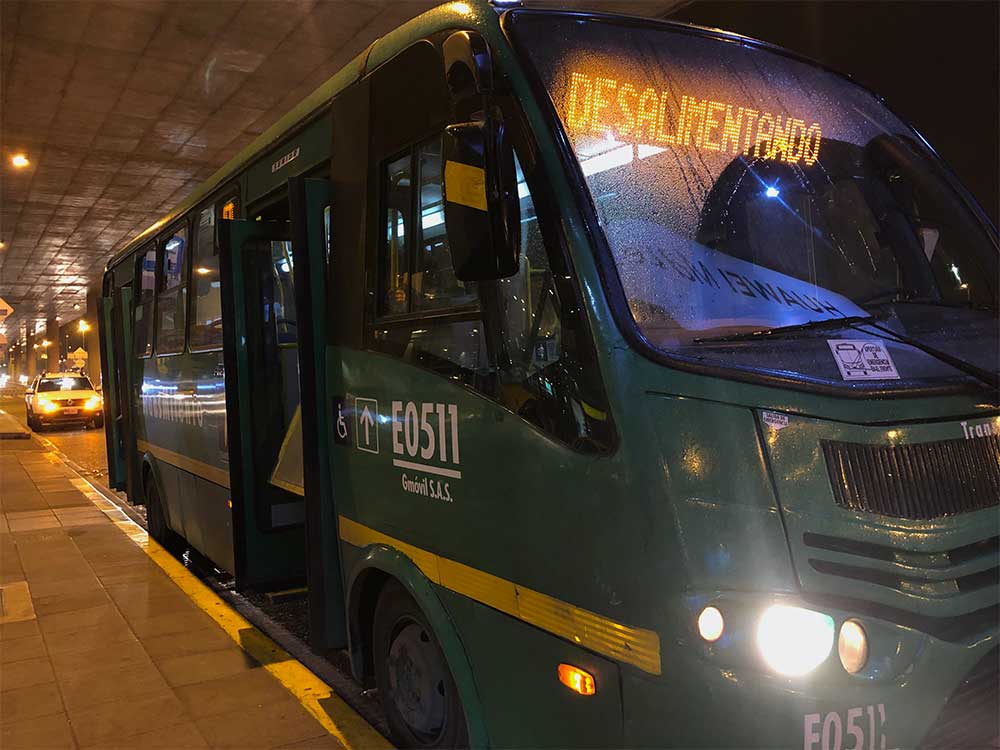
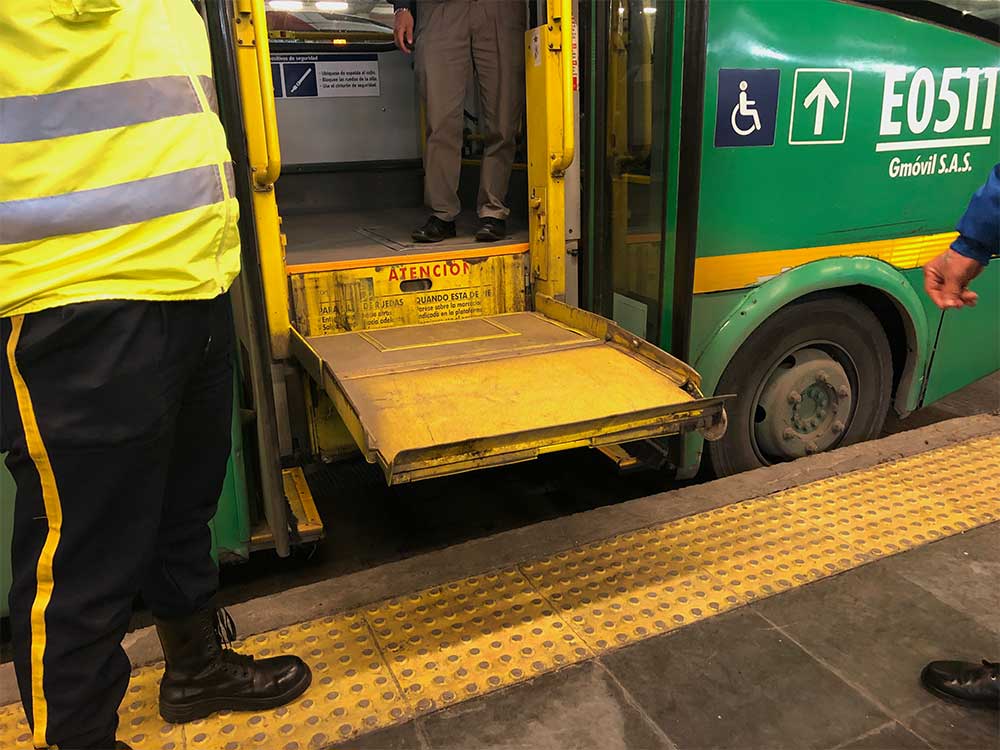
The 12 lines each feature dedicated roadways and bus stations, but Bogota’s city bus network provides service well beyond these high-traffic thoroughfares. Feeder buses extend out into the city, many of which are operated by smaller mini-buses. Many of the mini buses feature a wheelchair lift, but not all are equipped.
Journey Planner on Bogota Public Transport
In most cities, I use Google Maps to plan my public transit journeys, but in Bogota I used a combination of two different apps: the official TransMi App and the fantastic Moovit App, which offers great coverage of public transport in South American cities.
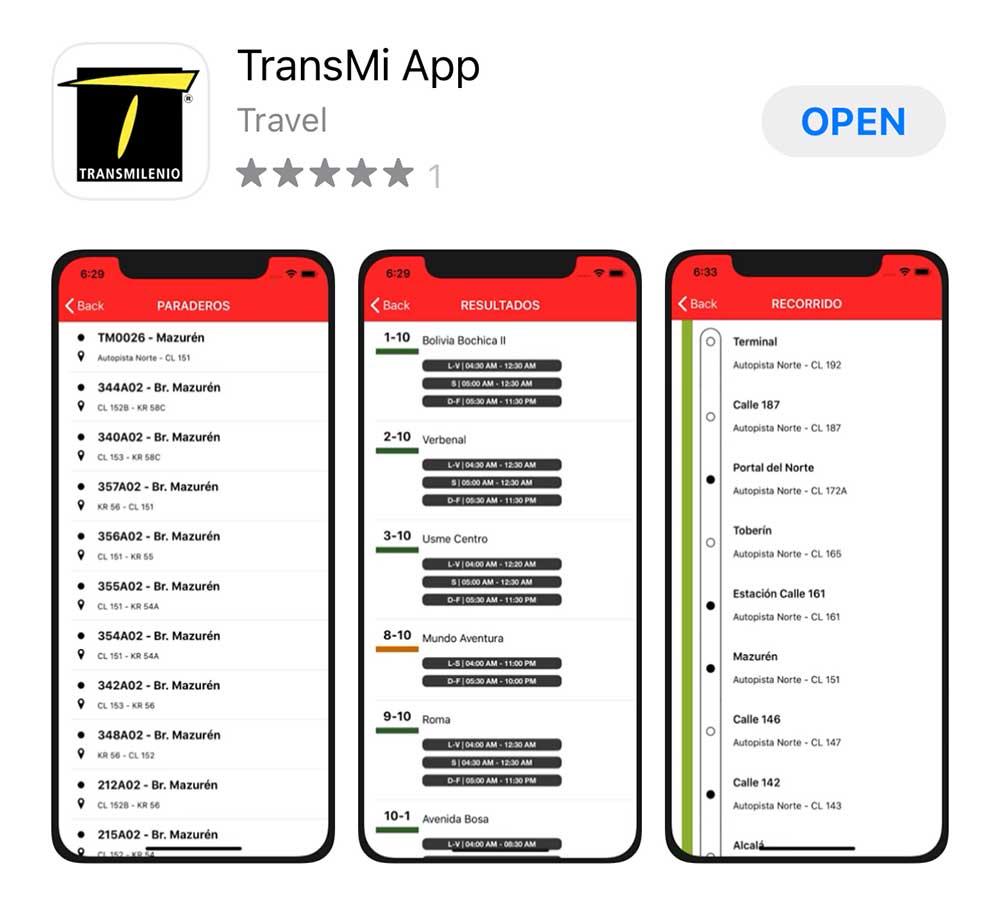
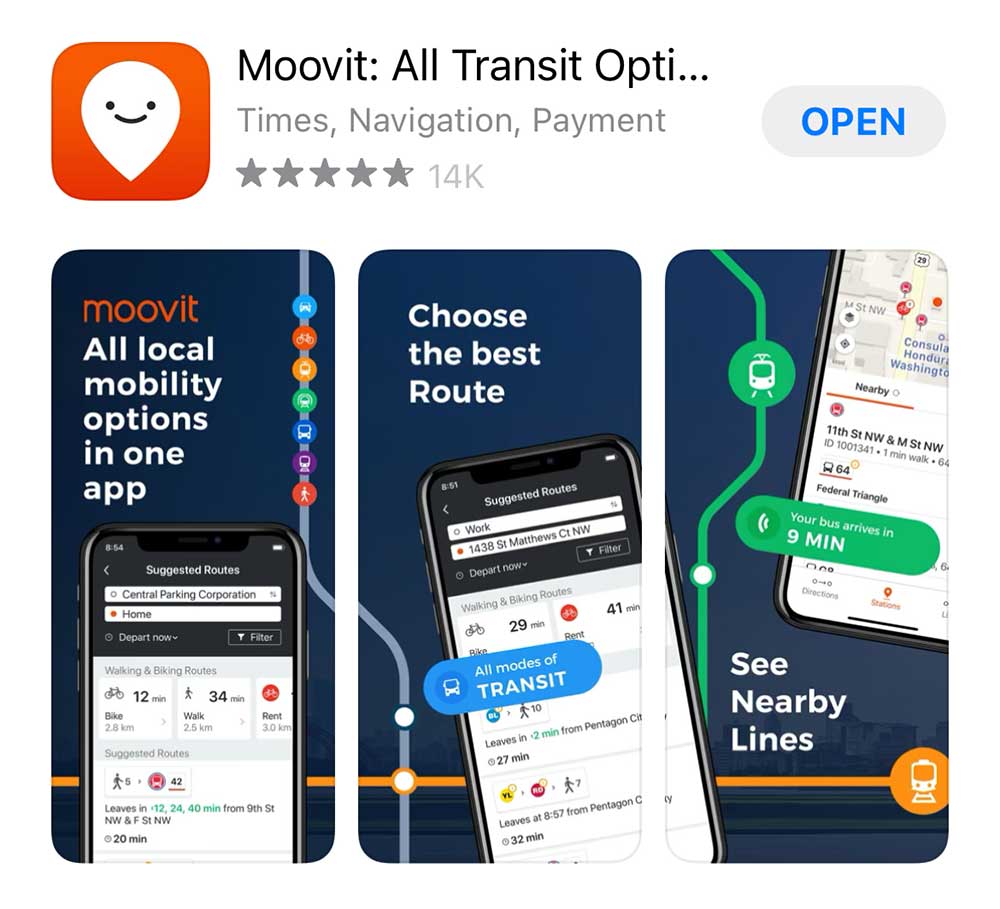
I found myself using the Moovit app more frequently than the TransMi App, mostly because I was familiar with Moovit, but both apps offer accurate directions between points and are presented in English. Download links for the apps are provided below:
- TransMi App — Apple App Store | Google Play
- Moovit App — Apple App Store | Google Play
Fares & Payment
Fares are paid using the reloadable TuLlave Card, which costs 6,000 COP or about $1.70 USD. Each trip on TransMilenio service costs 2,500 COP, or less than 75 cents in U.S. dollars.
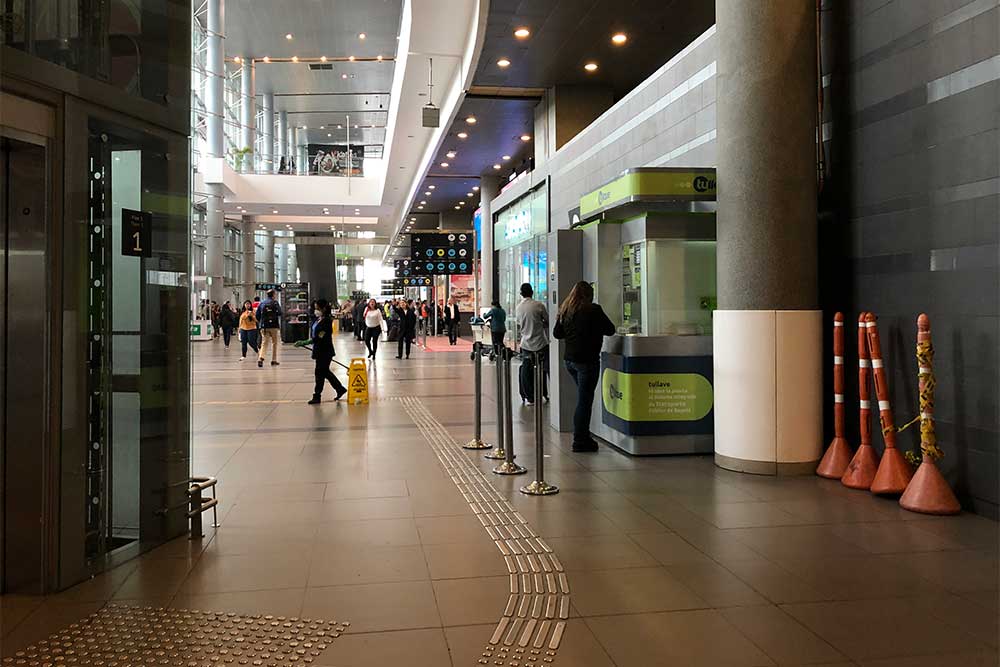
TuLlave cards can be purchased and reloaded at TransMilenio stations and kiosks. For first-time visitors to Bogota, I recommend purchasing a card at the TuLlave stand in the arrivals hall at El Dorado International Airport. When I purchased my card at the airport, I loaded it with 75,000 Pesos, just over $20 USD.
For more information on public transportation in Bogota, see the TransMilenio website.



